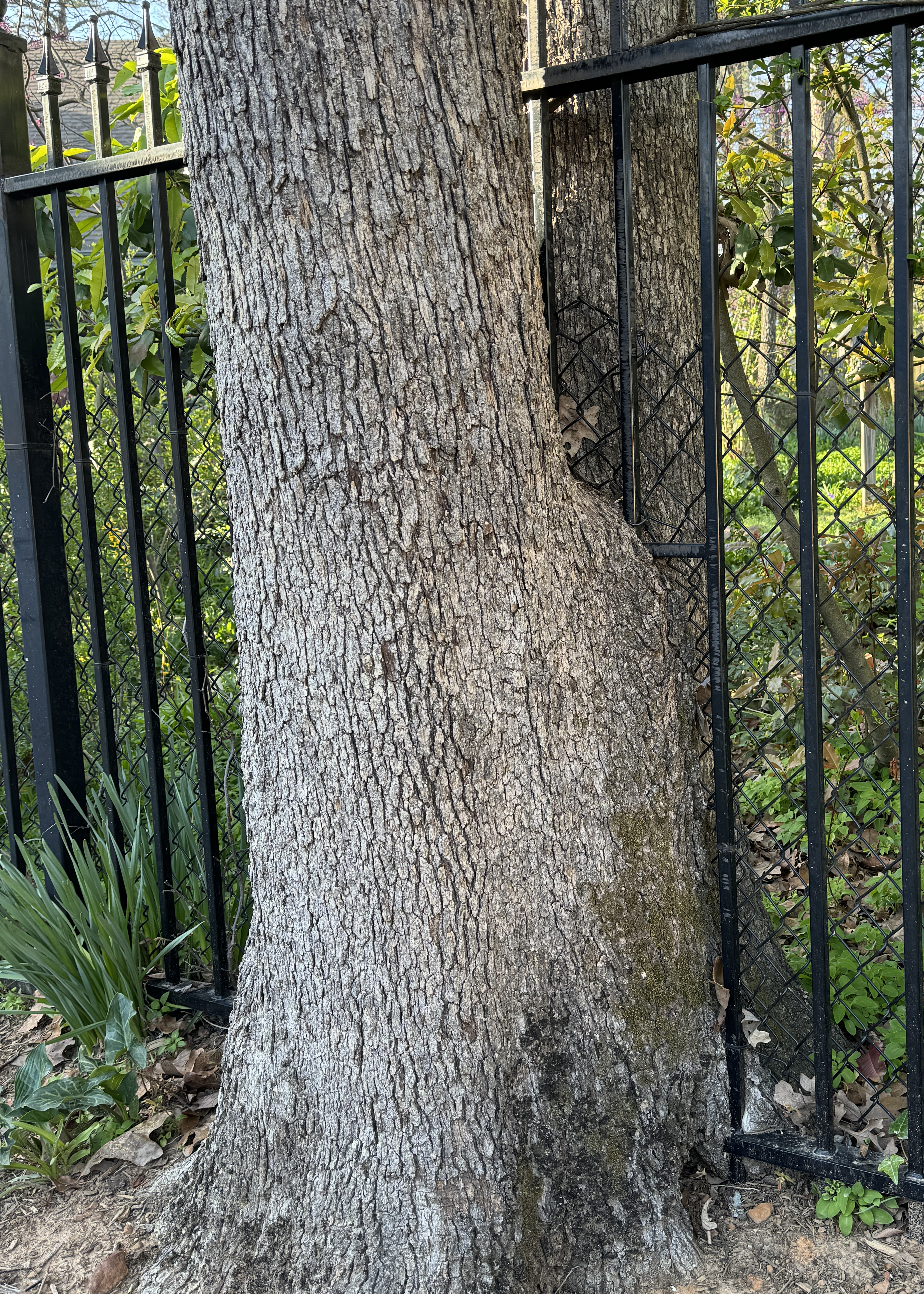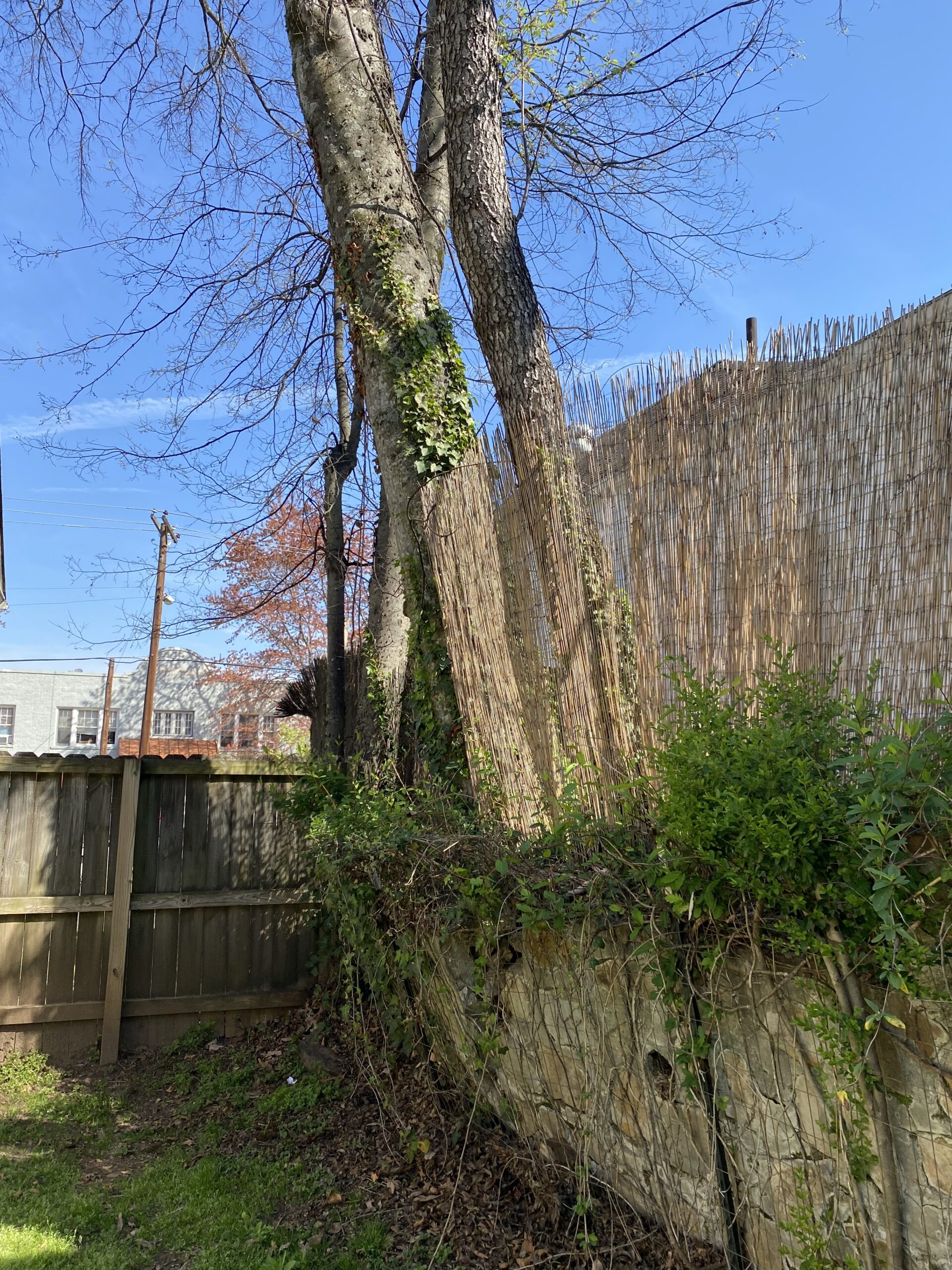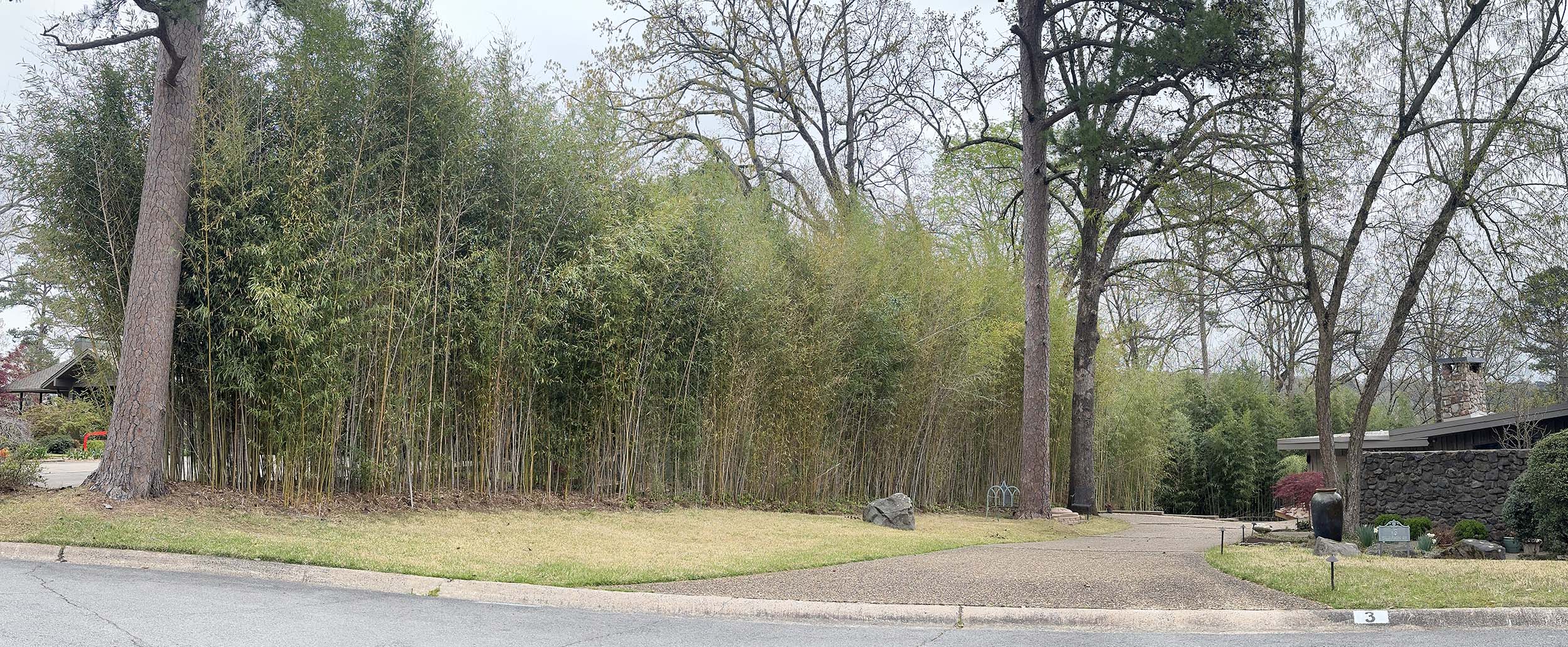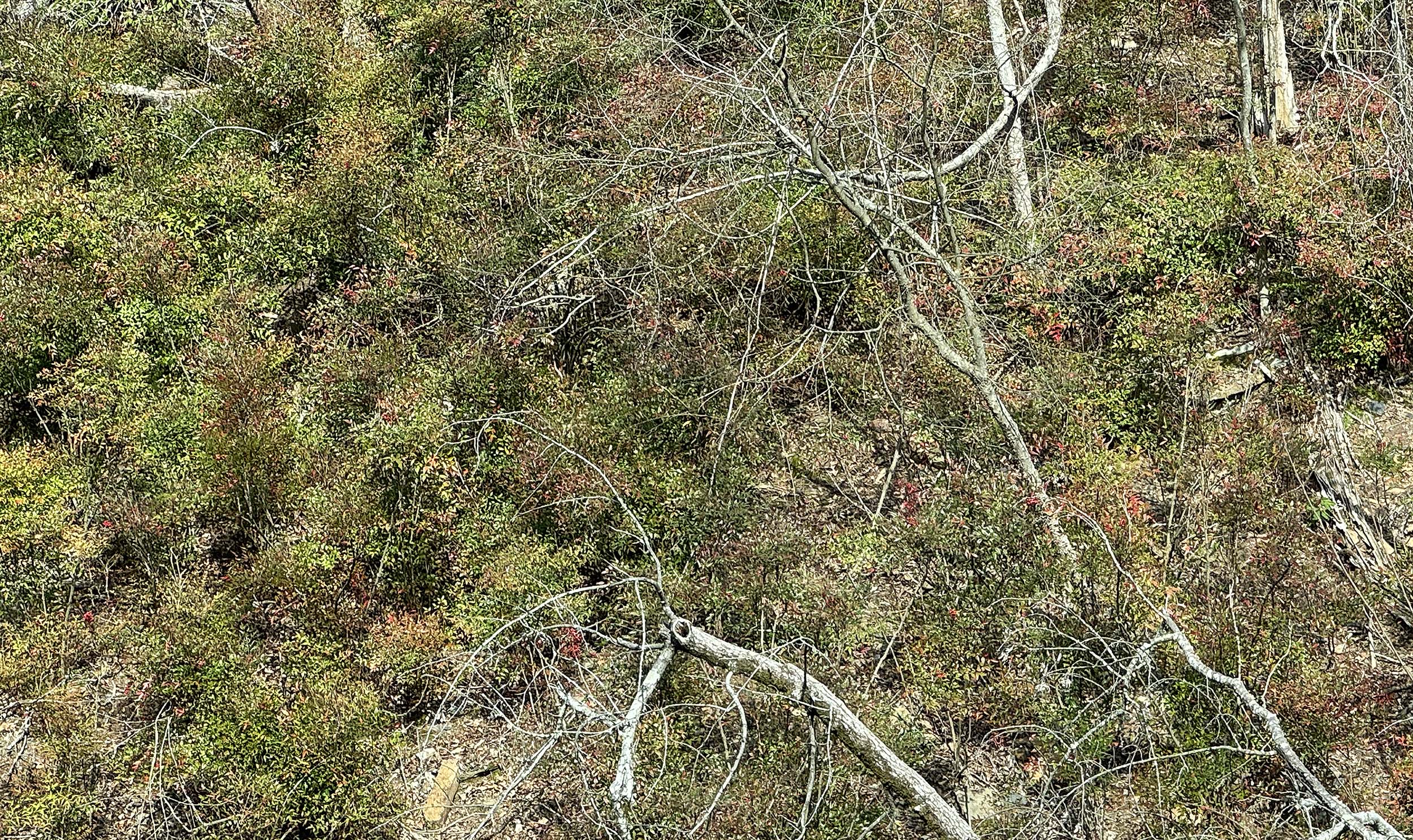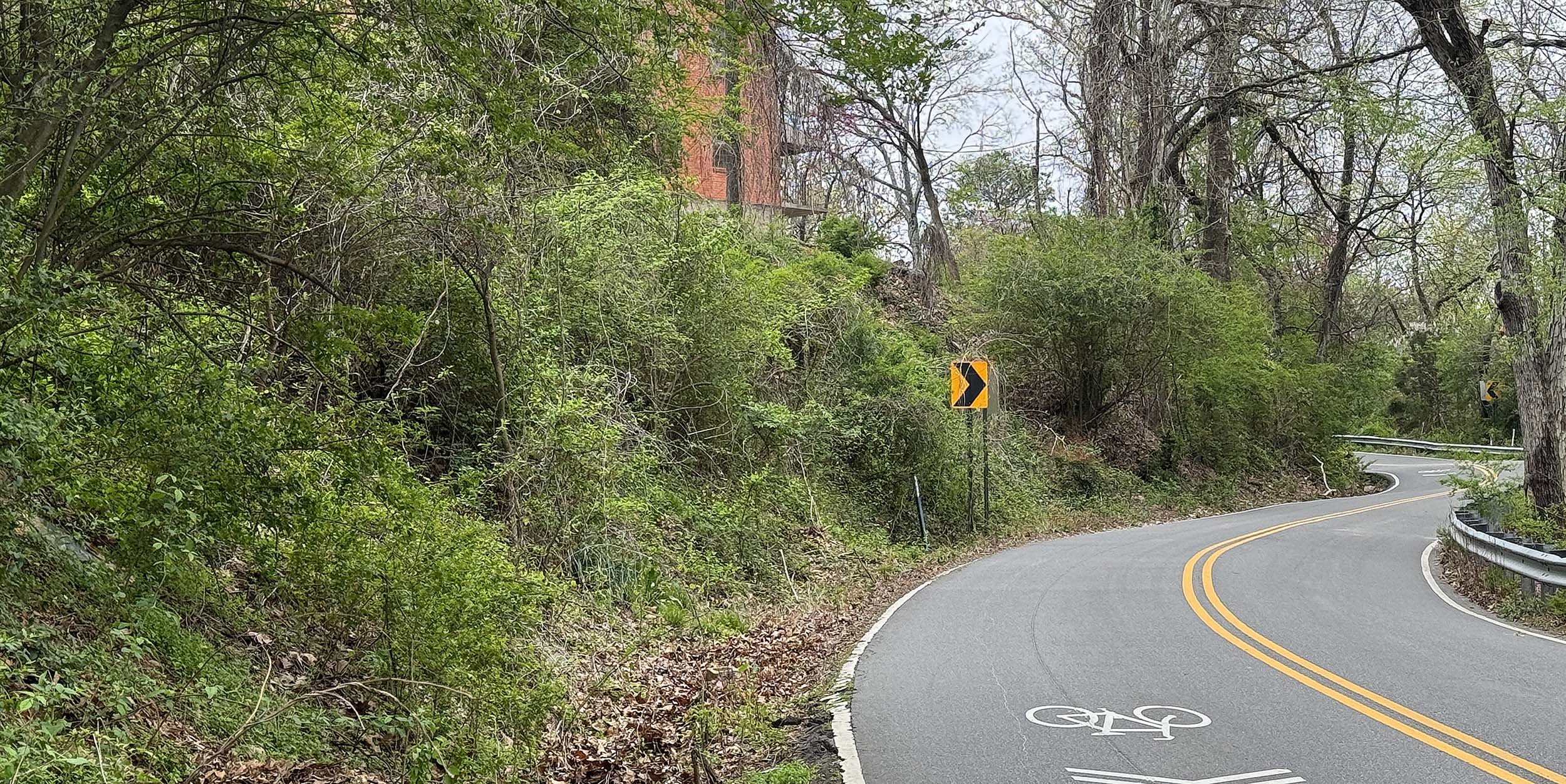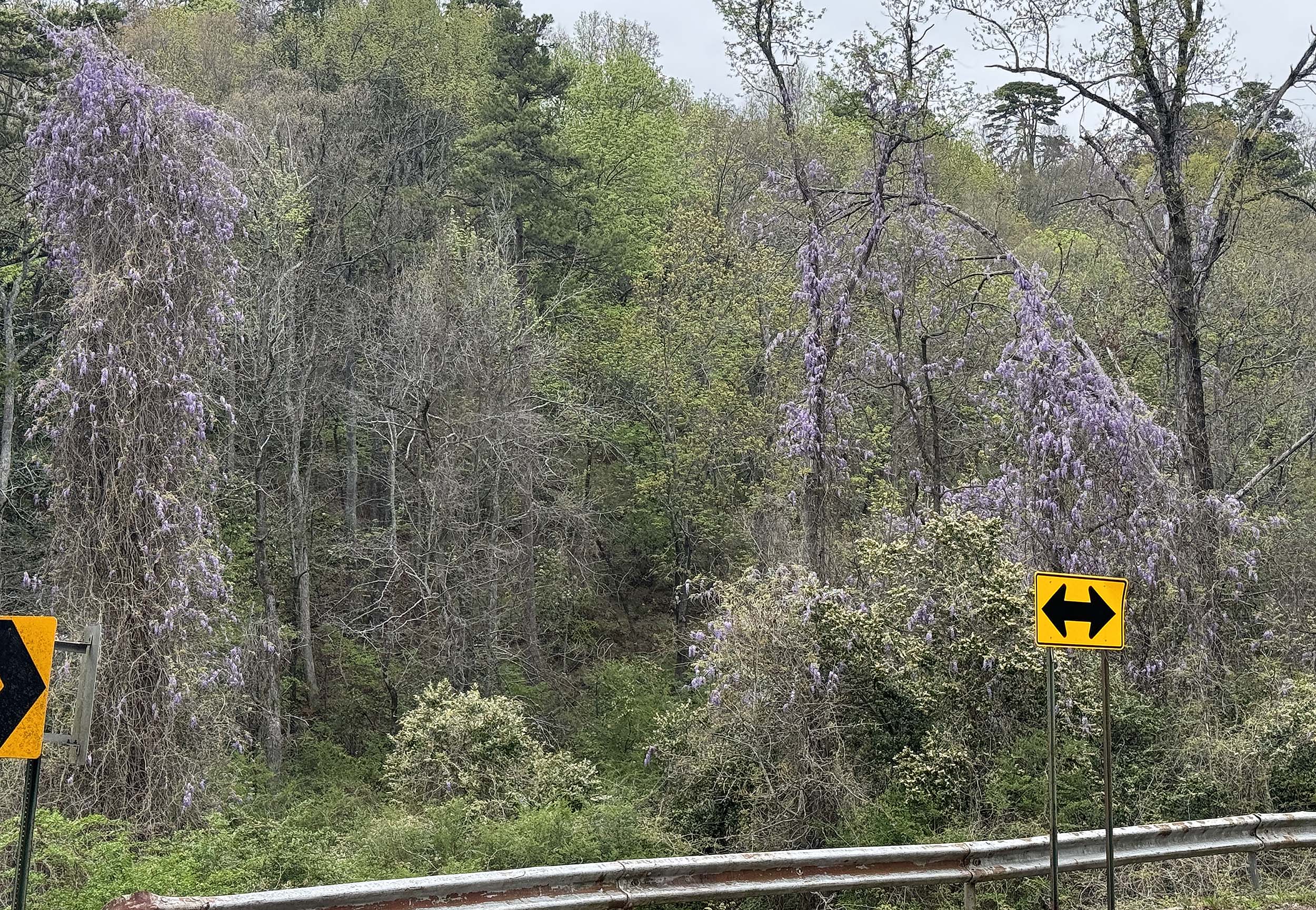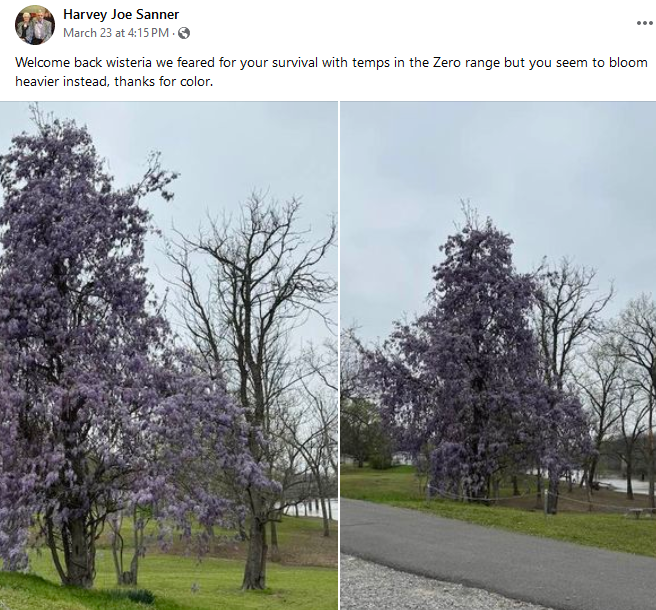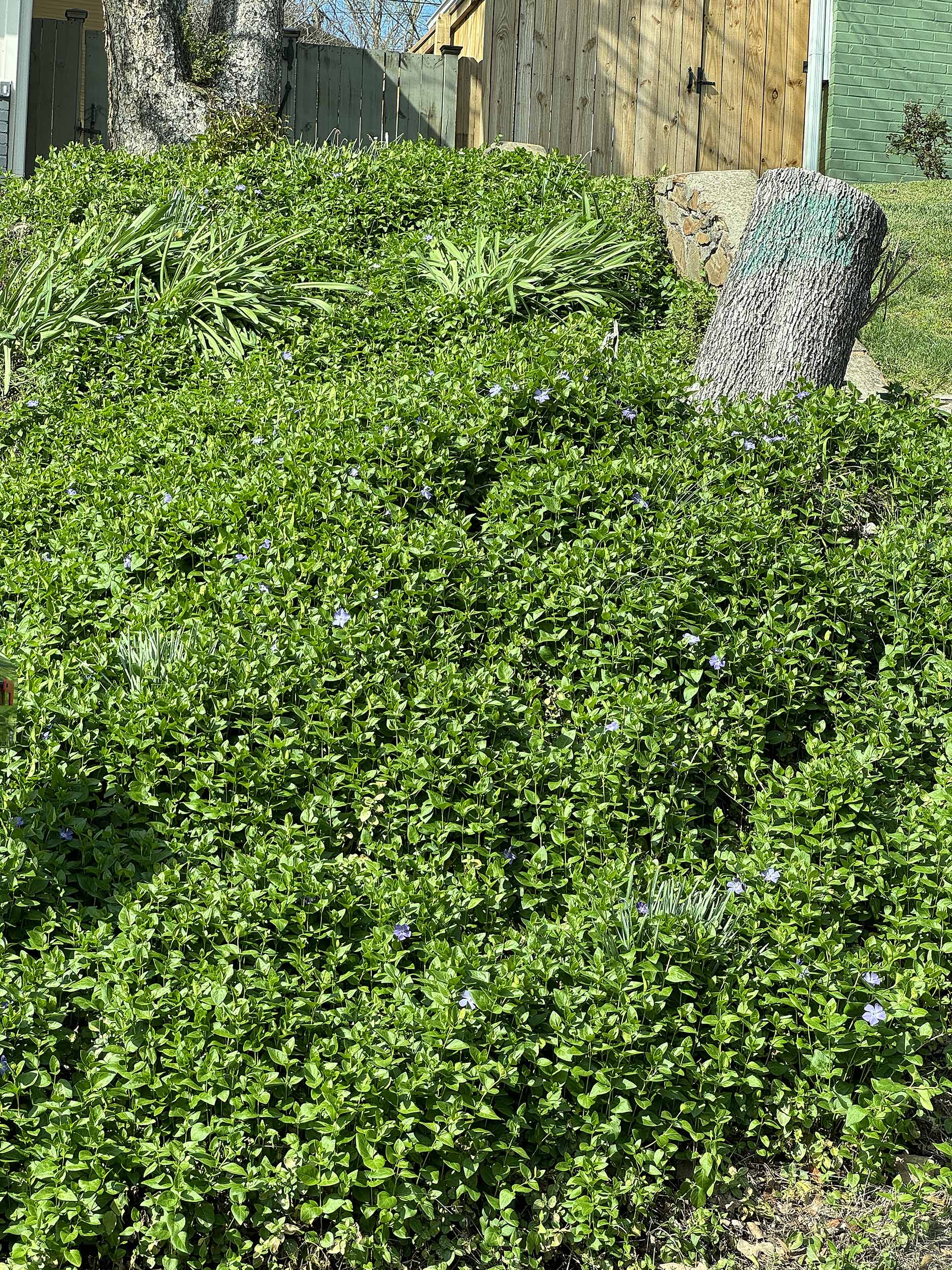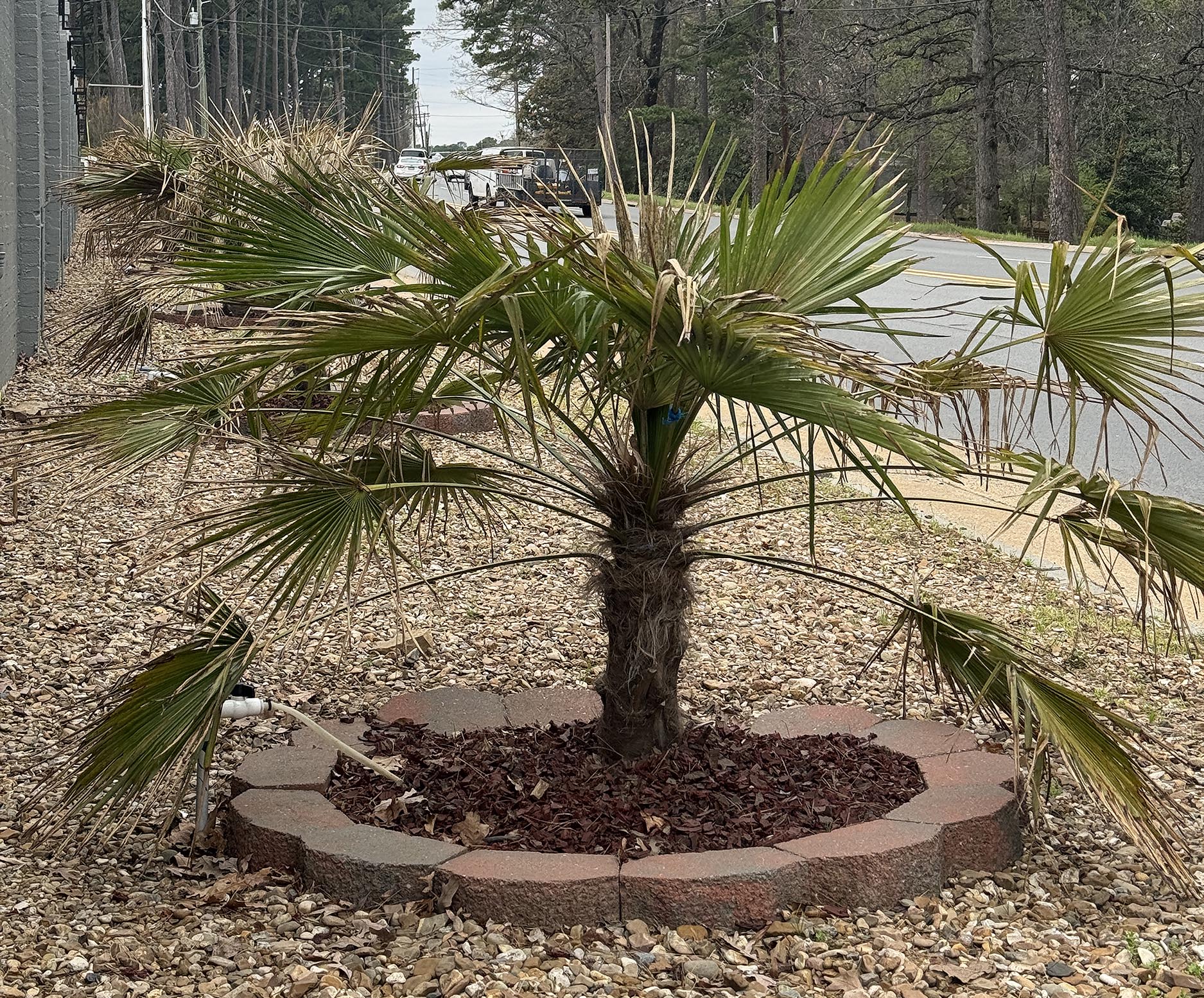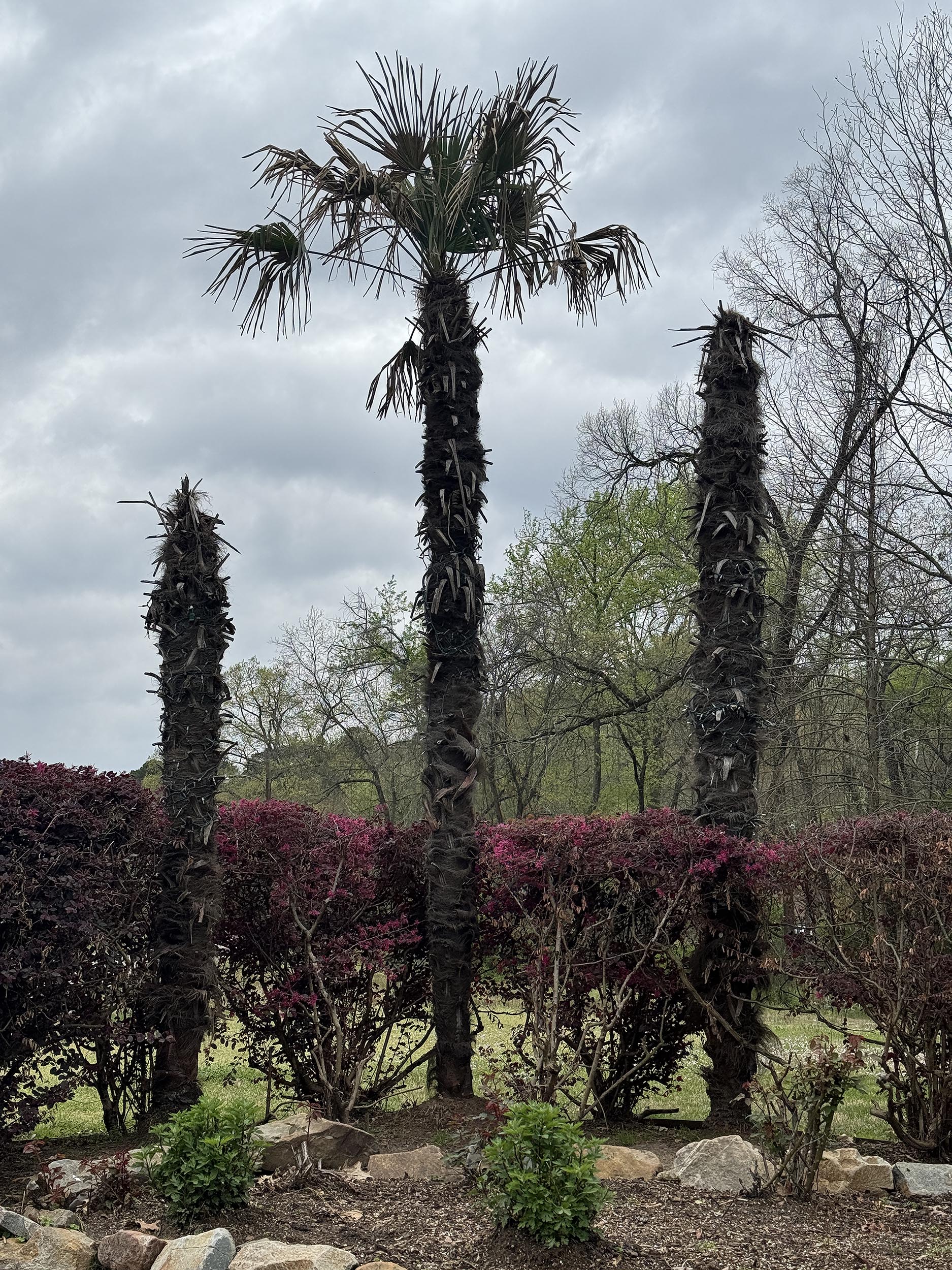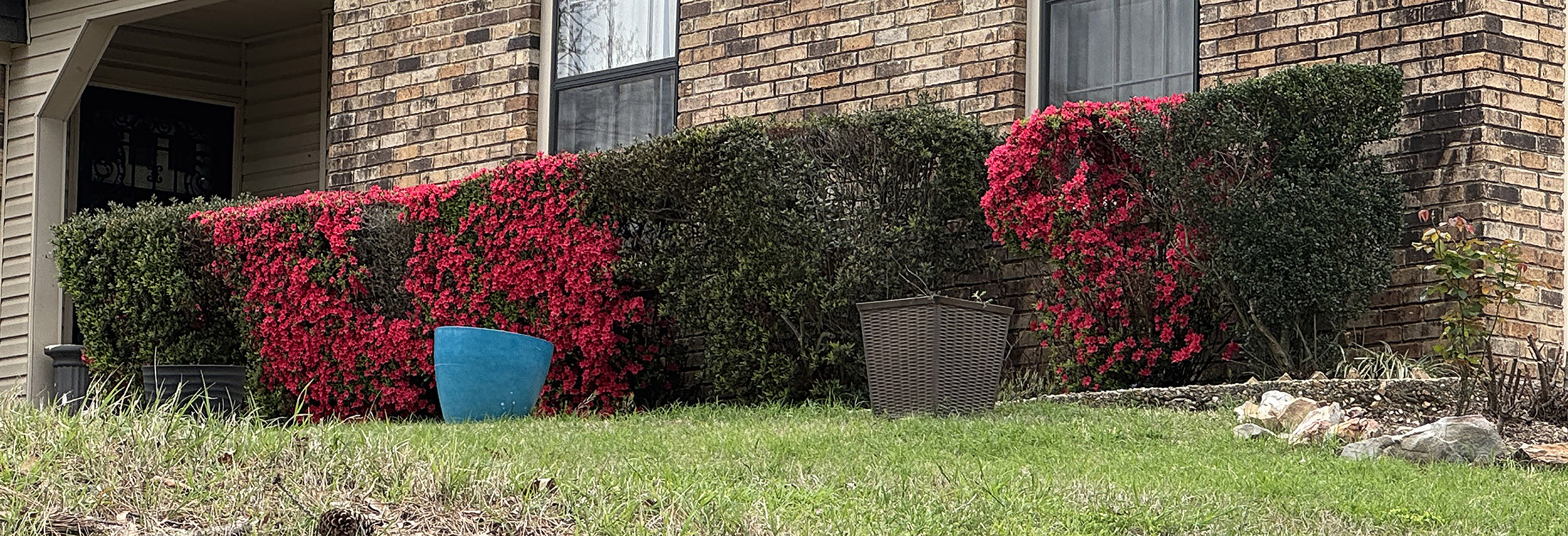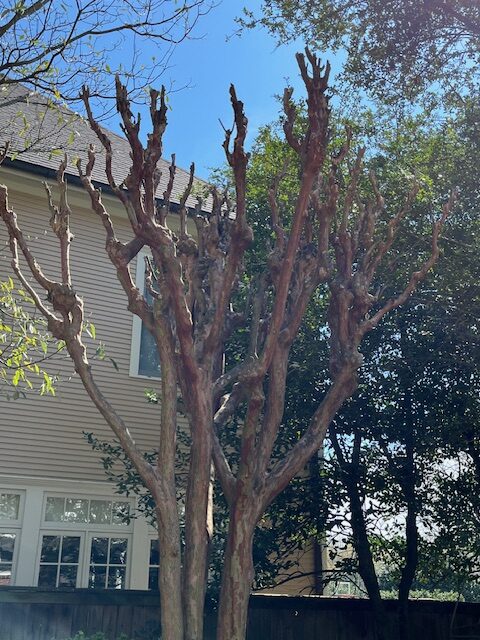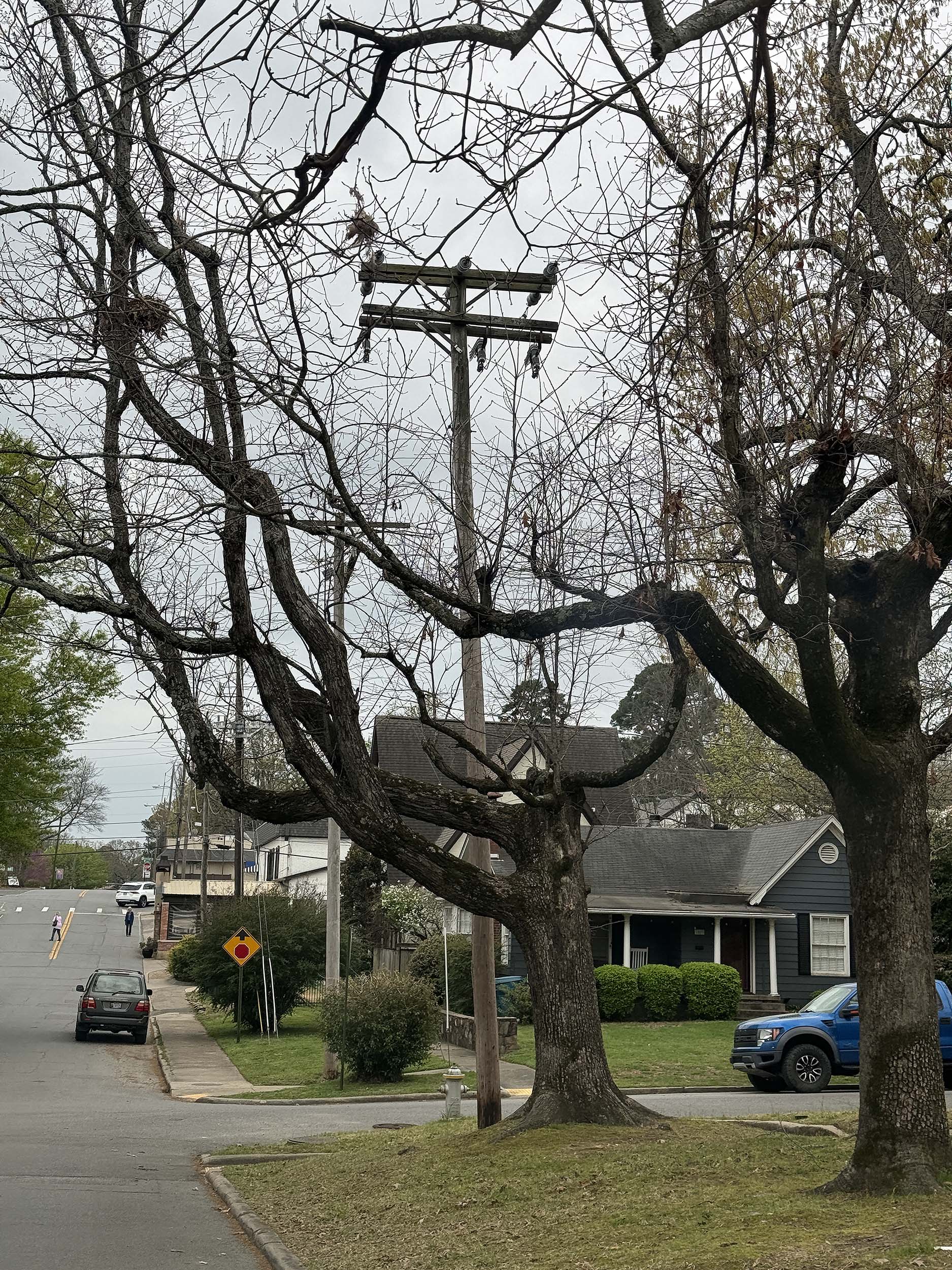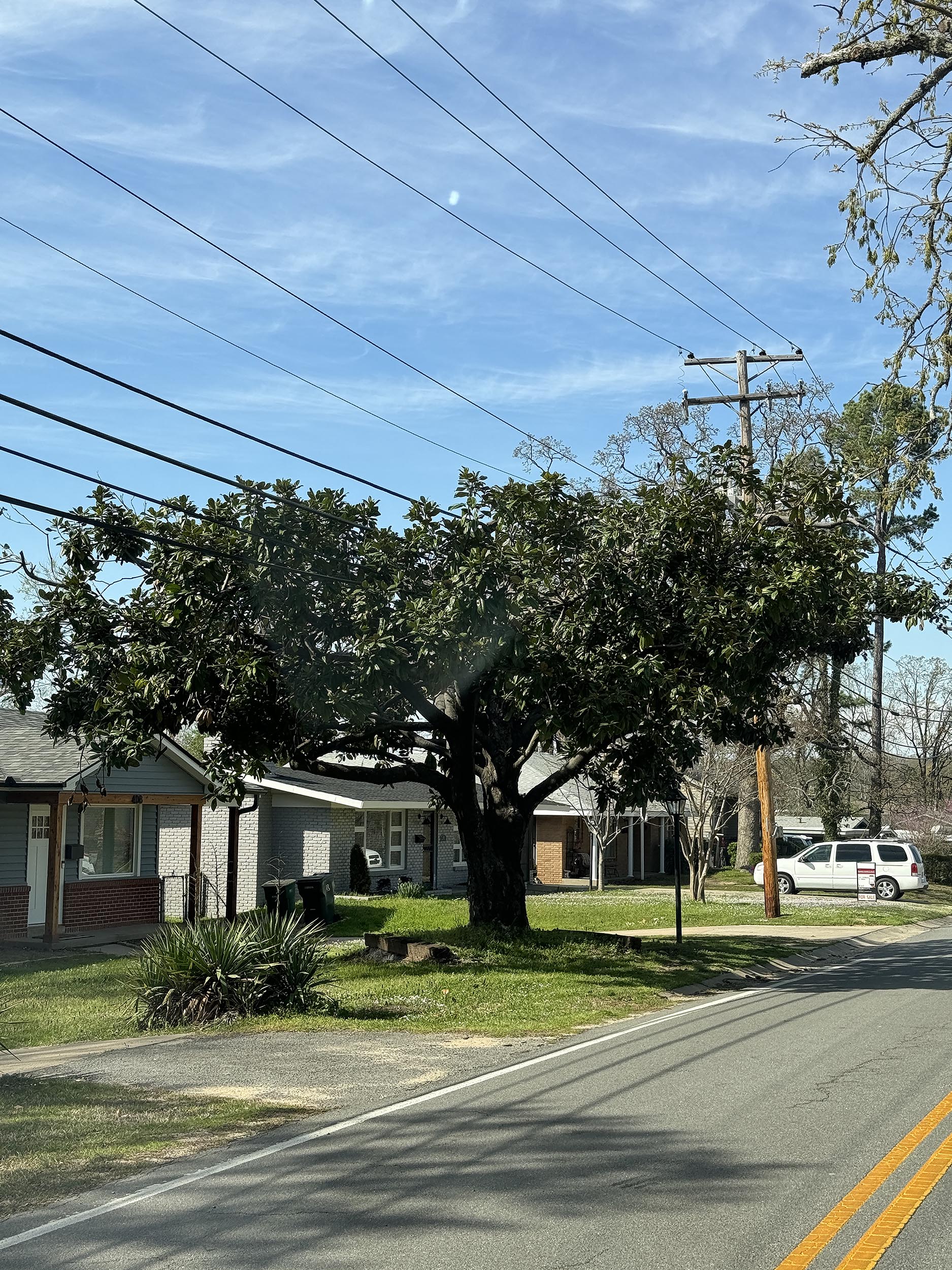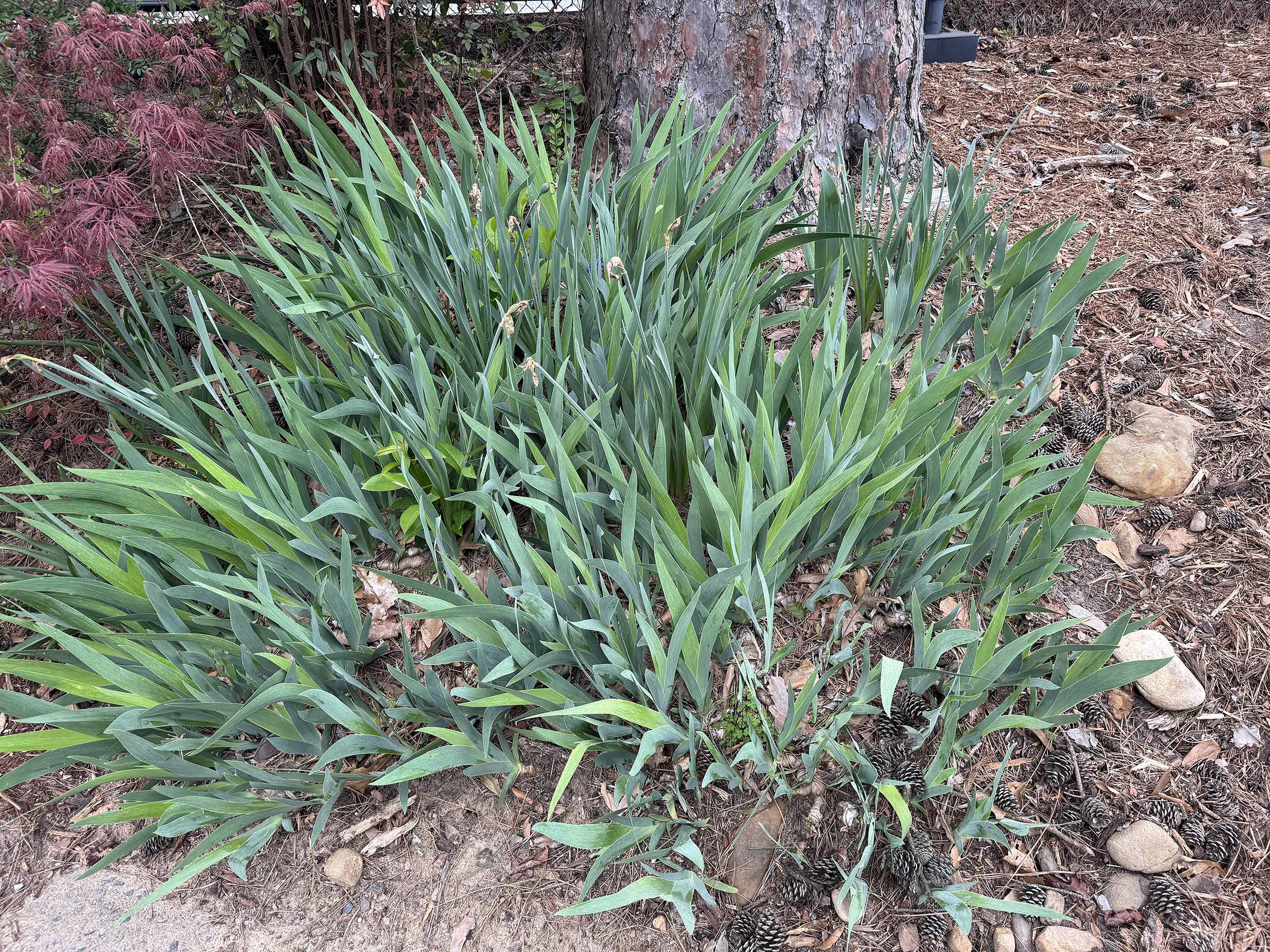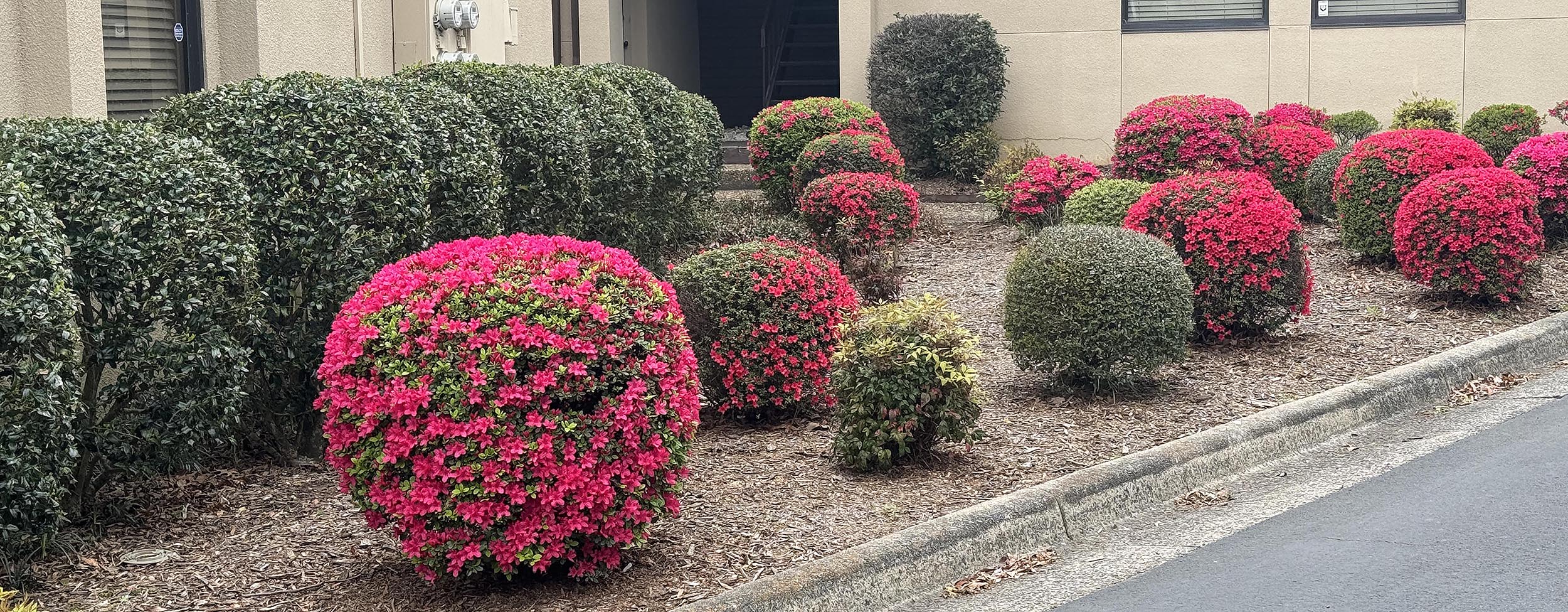As some of you know, I’m an activist. I’m now engaging in my activism against carbuncles on our landscapes. By “carbuncles,” I mean the egregious errors we make in plant choice, plant placement, pruning decisions, and erecting structures adjacent to plants that are innocently minding their own business when humans come charging in to muck things up.
See that functional yet attractive fence carefully erected between two trees? You can see the little crossbar where the vertical pole couldn’t reach the ground because a tree or two was in the way. Whoever erected this fence accommodated future growth—until they didn’t.
Is anyone else concerned about the person in the future who will need to chainsaw his way through that trunk once the trees die or get blown over by a tornado? That person could be killed.
I have not yet asked the neighbors what they were thinking. They are Very Nice People.
My cousin Lisa supplied incriminating evidence of another disturbing fence condition caused by a neighbor’s landscaping gross negligence.
That poor retaining wall won’t retain anything much longer because it’s trying its best to contain the roots of trees that never should have been allowed to grow there. Hackberry and black locust? More like horticultural hackery and a plague of locusts.
Bamboo creates an impenetrable fence of evil that mere fences cannot contain and for which our victimized neighbors hate us with the fiery passion of the sun.
Sometimes, bamboo disguises itself as a religious enterprise. “Heavenly” bamboo is a beautiful scourge. Very Nice People cut it and bring it indoors, telling me, “It looks so pretty in winter!”
Yes. In winter, the birds do their best to aid Nandina domestica in its insidious plan for world domination. They die in the process. Nandina kills the birds that eat its berries. New Nandinas grow from the rotting corpses of mockingbirds, cedar waxwings, robins, and other songbirds that consume the cyanide-laden berries. This stuff is evil, through and through.
Last year, a tornado exposed an army of nandina encamped on the hillside bordering Indian Trail. The photo here cannot do justice to the scope of the invasion. Every bit of red and green is nandina. Next time you’re out and about, drive by. Like the Indians of yore, you will see non-natives marauding from the east. You can do everything to eradicate the problem; you will fail. Conscientious gardeners cannot root out nandina with poison, pickaxes, diesel, and fire. I should know. I’ve tried.
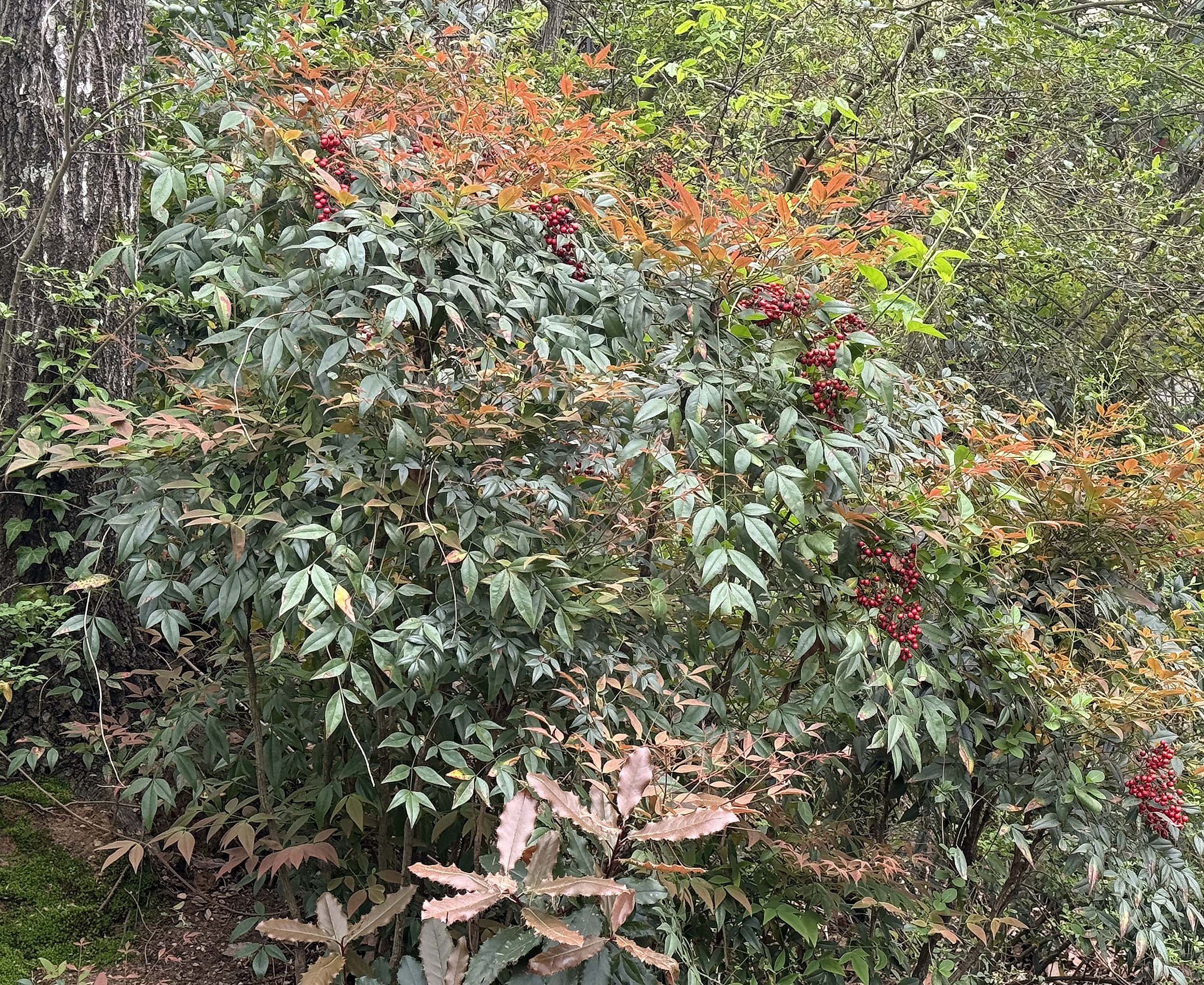 We need to drive no further than Cedar Hill Road to feast our eyes on a veritable smörgåsbord of non-native invasive species. In addition to an abundance of wisteria, visitors are delighted (?) to see English ivy, Bradford pear, privet, and—commonly seen in the wild—the effusive ditch nandina (N. domestica ‘Pretty Woman’), preening and proudly displaying her berries like some streetwalker in fishnets and a microskirt.
We need to drive no further than Cedar Hill Road to feast our eyes on a veritable smörgåsbord of non-native invasive species. In addition to an abundance of wisteria, visitors are delighted (?) to see English ivy, Bradford pear, privet, and—commonly seen in the wild—the effusive ditch nandina (N. domestica ‘Pretty Woman’), preening and proudly displaying her berries like some streetwalker in fishnets and a microskirt.
Without regard for decency or decorum–in fact, without any evidence of good manners at all–these invasive aliens crowd the narrow, winding road and cover the street signs. Nandina is there, of course, but also more Privet than remains in China, Bradford pears, mimosas, Asian honeysuckles (please consider using our beautiful Arkansas native yellow honeysuckle or trumpet honeysuckle instead), Vinca major (periwinkle), Paulownia, English ivy, thickets of Tree of Heaven, Photinia, Chinese tallow trees, Chinese parasol trees, and more.
Even though it is not currently smothering the hillside, we all know what this stretch of Cedar Hill looks like in July. Soon, my activist friends and I will circulate a petition to rename the area “Kudzu Hill.” Please be prepared to sign it.
Allsopp Park could serve as the poster child for the Cooperative Extension Services’s website for invasive species. Check it out. You’ll be appalled at what evils we harbor in our home landscape. My photocompanion and I took so many pictures of Asian wisteria in the park we nearly exhausted the limitless storage space on our photojournalism-issued iPhones. Here are some specimens growing about 200 feet from the ravine’s floor along Cedar Hill Road. (Note the abundance of privet, too.)
A friend from my hometown proudly posted a photo of his favorite wisteria. It is indeed gorgeous. We are publishing his photo with his blessing and giving him credit as promised. (He provided no information as to the health of the beleaguered tree strangling under the glory of the purple succubus.)
This time of year, Vinca major, the European periwinkle used as a perennial ground cover, gears up to take over unsuspecting beds in a coup that asphyxiates everything within its reach. Yes, it can hold a hillside in place. It does so at the cost of native plants, insects, and wildlife. Here’s a particularly healthy clump of it, newly exposed to lots of sun on this steep slope in Kingwood since March 31, 2023.
Not all alien species are invasive, but some scream “I DO NOT BELONG HERE” at the top of their lungs anyway. cough palm trees cough
In the category of pruning things that should never be pruned, let’s discuss azaleas. Walls of flowers are lovely, sure, but the stripes in those ranks aren’t exactly uniform. (Also, Loropetalum is not supposed to be given a flattop. I shall endeavor to find a photo at some point.)
Many of us proclaim disdain for invasive, non-native species. We generally aren’t talking about fire ants, zebra mussels, or homo sapiens sapiens; we refer to Bradford pears. “Something should be done,” we agree, nodding somberly and congratulating ourselves on our awareness of the tragedy. Then, we prune them like this just before they bloom, eliminating all the problems.
True story: I was at a local garden center last weekend – one that proudly touts its stock of native plants. It openly sells Bradford pears. WHY?!
In addition to allowing the proliferation of invasive aliens, we do active damage to otherwise law-abiding plants. Beginning in February, crape murder happens unabated on practically every block. My friend Nancy sent me this photo of an active murder scene in her backyard. When she said she had a murder, I was hoping for crows.
Humans compound their crime by allowing the proliferation of black sooty mold on the bare trunks of the murder victims. Failure to treat the pest that causes the mold spreads it like a plague, and those sadly shorn crape myrtles are plague enough.
This stand of molded and murdered crapes is enhanced by the Chinese wisteria tangled in the privet in the background. A four-fer!
This tree on Cantrell desperately waves for help after being butchered by the utility company’s tree service.
These are two in an entire street’s worth of big old oaks that got topped in the name of utility. Topless trees are obscene.
This poor Magnolia grandiflora x torturosa tragicii var. ‘Someone Cut Off Its Head AND Stole Its Pants’ is dreadfully exposed on University Avenue.
Pruning isn’t our only mistake. I drove through a local country club recently and noticed their professional grounds crew had mulched the iris. I nearly had a case of the vapors.
To end on another travesty from my yard, I’d like to introduce you to my sweet autumn clematis. Except, I can’t. Last year, when I learned it was an invasive foreigner, I sanctimoniously ripped it off my mailbox. I replaced it with a native passionflower vine that had been growing joyously in the backyard. I hope it likes its new home. It will probably take over.
As an unrepentant activist, I’d typically invite you to a fundraiser or a rally right now. Instead, I have a different favor to ask: Please examine your gardens for criminal elements and eradicate them. Exercise responsible horticulture and good taste.
Good taste. That brings me to azaleaballs. How does one serve azaleaballs? Should they be accompanied by a dipping sauce or simply rolled in sugar?
Yours in activist spirit,
Anne

